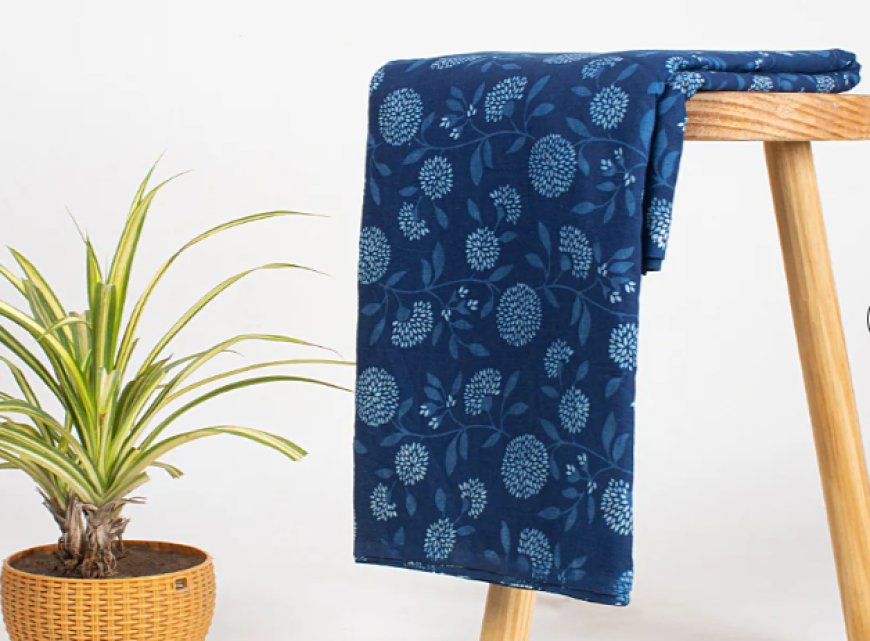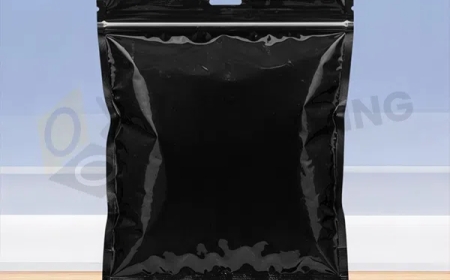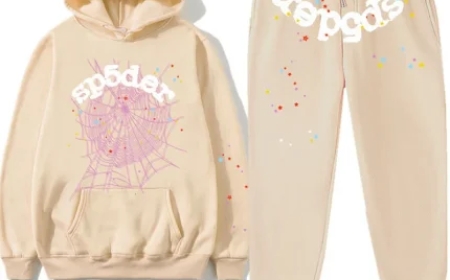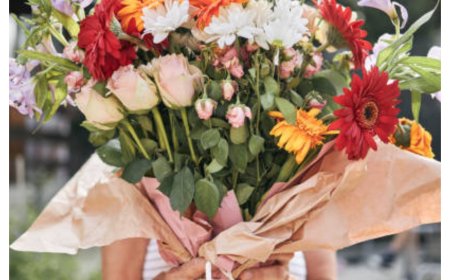Indigo Print Fabric: A Timeless Textile Art Reimagined
Indigo print fabric is a richly hued, artisan-crafted textile dyed using indigo—a natural dye derived from the Indigofera plant.

Indigo print fabric is a richly hued, artisan-crafted textile dyed using indigo, a natural dye derived from the Indigofera plant. Known for its deep blue tones, indigo printing has adorned fabrics for centuries, evolving from ancient civilisations in India, Japan, and Africa into a globally cherished textile tradition. Today, indigo print fabric is admired not just for its stunning visual appeal but also for its eco-friendly and sustainable nature.
The Origins and Heritage of Indigo Dyeing
Indigo dyeing has its roots embedded deep within human history. It is one of the oldest known dyeing techniques, with evidence tracing back over 4,000 years. Cultures across Asia, particularly in India, China, and Japan, have utilised this plant-based dye to produce symbolic and ceremonial garments.
In India, especially in regions like Rajasthan and Gujarat, the traditional technique known as Dabu printing involves a resist-dye method where mud is applied to the fabric before dyeing it in indigo vats. This process enables artisans to create intricate and distinctive patterns that remain resistant to modern mass manufacturing.
The Indigo Dyeing Process: An Eco-Friendly Craft
The creation of indigo print fabric involves a meticulously orchestrated, multi-step process that demands both skill and patience:
-
Preparing the Fabric Typically, natural fabrics like cotton, silk, or linen are chosen. They are cleaned and prepared to ensure optimal dye absorption.
-
Creating the Resist Pattern Designs are stamped or painted using resist materials such as mud or wax.
-
Dye Bathing in Indigo The fabric is submerged in a fermented indigo dye bath. Upon contact with air, the fabric oxidises, transforming from green to blue.
-
Drying and Washing The dyed fabric is dried, washed, and often re-dyed several times to achieve the desired depth of colour.
Unlike synthetic dyes, natural indigo is biodegradable, non-toxic, and requires less water, making it a sustainable alternative in the modern textile industry.
Types of Indigo Print Techniques Around the World
Dabu Print (India)
The Dabu resist printing technique from Rajasthan is one of the most celebrated forms of indigo textile printing. Artisans apply a paste of clay, gum, and lime to block certain fabric areas before dyeing. The result is a striking contrast between dyed and undyed areas, often featuring ethnic, floral, and geometric motifs.
Shibori (Japan)
Japanese Shibori is a tie-dyeing technique that involves folding, twisting, or binding fabric before dipping it in indigo. The resulting patterns are organic and unique, showcasing the artisans creativity.
Adire (Nigeria)
In Yoruba culture, indigo is used in Adire, a method where cassava paste acts as a resist. Adire fabrics are deeply symbolic, often worn during traditional ceremonies.
Applications of Indigo Print Fabric in Fashion and Interiors
Thanks to its timeless elegance and durability, indigo print fabric is used extensively in:
-
Fashion apparel: Including dresses, tunics, scarves, shirts, and skirts. It fits seamlessly into both traditional and contemporary wardrobes.
-
Home dcor: Such as cushion covers, curtains, bed linens, and table runners.
-
Accessories: Bags, shoes, and even notebook covers often showcase these distinct indigo prints.
The adaptability of indigo prints means they blend effortlessly with other textures and colours, creating a chic, boho, or ethnic look, depending on how they are styled.
Why Indigo Print Fabric is a Sustainable Choice
Choosing indigo print fabrics supports eco-conscious consumption. Here's why:
-
Natural dye source: Indigo is derived from plants, unlike chemical dyes that pollute water systems.
-
Biodegradable textiles: The organic base fabrics and dyes break down naturally without harming the environment.
-
Handcrafted techniques: Many indigo-printed fabrics are created by hand, supporting traditional artisans and reducing industrial emissions.
In a world grappling with climate change and environmental degradation, indigo print fabrics stand as a symbol of responsible luxury.
How to Care for Indigo Print Fabrics
Indigo dyes, especially when naturally derived, require special care to preserve their beauty. Follow these guidelines:
-
Wash separately the first few times to avoid colour transfer.
-
Use mild, pH-neutral detergents.
-
Avoid direct sunlight for prolonged periods as it may fade the colours.
-
Prefer hand washing or gentle cycles in the machine.
-
Line dry in shade and avoid wringing.
Proper care ensures your indigo print fabrics retain their deep blue allure for many years.
Where to Buy Authentic Indigo Print Fabric
To ensure authenticity and quality, consider sourcing indigo print fabric from:
-
Artisan cooperatives and fair trade organisations.
-
Boutique fabric stores that specialise in handcrafted textiles.
-
Online platforms like Etsy or regional e-commerce sites that support sustainable crafts.
Look for labels or certifications that guarantee natural dye usage, fair labour practices, and traditional craftsmanship.
Trends and Innovations in Indigo Textiles
Contemporary designers are now merging traditional indigo dyeing with modern aesthetics. Key innovations include:
-
Digital pattern enhancement with indigo base layers.
-
Combining indigo with eco-friendly metallic prints.
-
Hybrid dyes that fuse natural and low-impact synthetic indigo for enhanced colour fastness.
-
3D printing on indigo fabrics for avant-garde fashion lines.
These innovations are not only reviving interest in ancient crafts but also opening doors to global fashion markets seeking sustainable, story-rich materials.
Supporting Artisans: A Cultural and Ethical Choice
Behind every yard of indigo print fabric lies the labour of master artisans, often from marginalised communities. By choosing these textiles, consumers contribute to:
-
Preserving endangered traditional techniques
-
Empowering rural economies and craftspeople
-
Ensuring fair wages and working conditions
Organisations like Dastkar, Fabindia, and Artisan Alliance play pivotal roles in safeguarding textile legacies through fair trade and educational initiatives.
Indigo print fabric is not just a textileit's a living heritage. It embodies centuries of craftsmanship, eco-conscious artistry, and global cultural connections. As sustainable fashion continues to gain traction, indigo print fabrics stand out as a perfect blend of history, sustainability, and style.


































